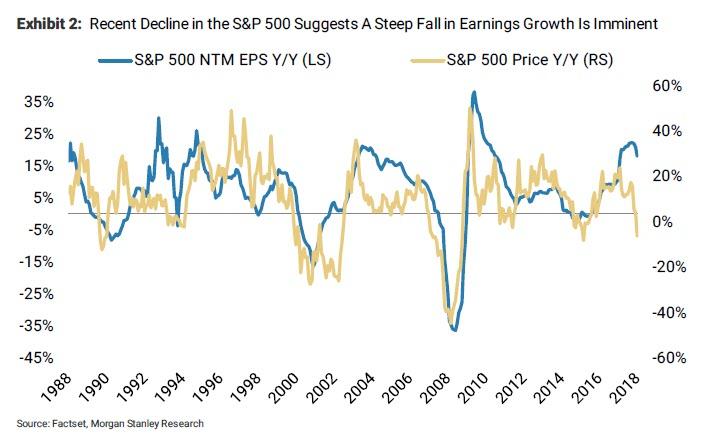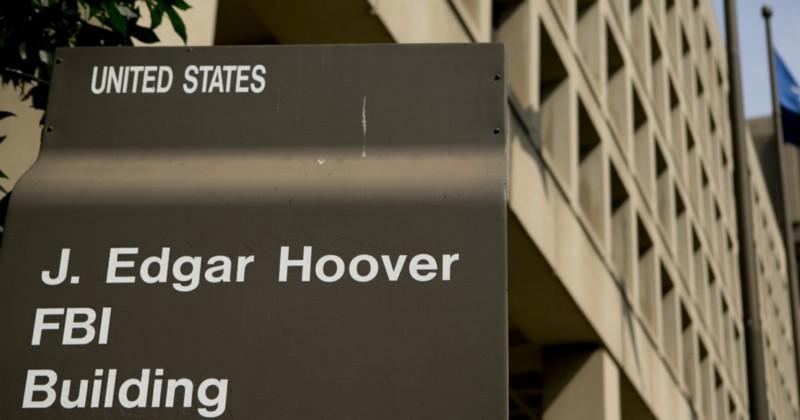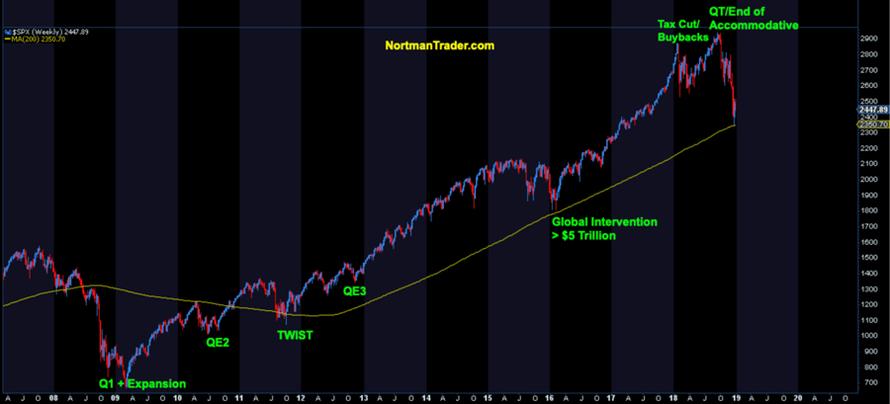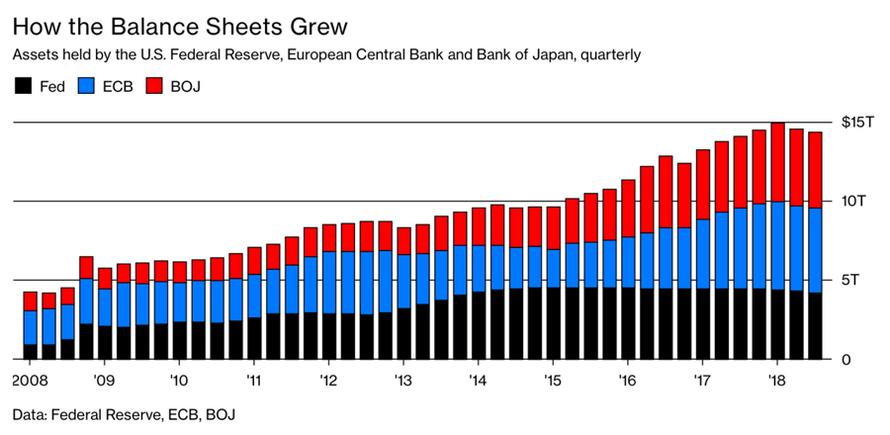Submitted by Three Body Capital,
TL;DR
The rise of passive and ETF investing is turning up the heat on active managers. Change is coming to our industry, and those that fail to adapt will fade into obscurity.
The old business was highly intermediated and lucrative, while the tokenised future is likely to be far less commercially attractive and unable to support the behemoths in their current form.
Despite the doom and gloom, we believe active management can generate compelling returns for investors and survive the impending upheaval that looks set to turn our entire industry upside down.
The elephant in the room
Asset management in its current form still looks much like it did back in the 80s, or even earlier. Asset managers aggregate investor funds and deploy capital in search of investment returns, seeking to identify mispricing in the market. The ascent of passive and ETF investing has turned the table on active managers, especially in terms of fees. Here at Three Body Capital, we’re still in this line of business because we believe it can generate compelling returns for investors. And we believe it will survive the impending upheaval that looks set to disrupt our entire industry.
While other industries have experienced profound structural disruption, financial services have stayed largely the same. Asset managers still employ complex fund/manager structures (e.g. Cayman domicile with a Delaware feeder, Malta, BVI, Bermuda, Jersey etc), with a large chunk of active management fees effectively diverted to the likes of fund administrators, custodians, exchanges, brokers and service providers fulfilling a range of regulatory and administrative functions.
The hurdles to entry into the asset management industry are high, which is why large managers get bigger and small upstart managers struggle to gain traction. Case in point: BNY Mellon, one of the largest custodian banks and asset managers in the world, has about US$1.8tn of assets under management and US$35.4tn of assets under custody. Asset management is profitable at around 28% pre-tax margin, but its custodial/services business generates almost 35% pre-tax margin, represents almost 55% of its US$13bn of non-interest income, and 44% of US$17bn of total revenues.
Custody, clearing, settlement and other issuer services are big business. Add to that expansive regulation and the need for more compliance and supervisory oversight in the years since the crisis of 2008, and the regulatory cost of managing external capital is rising. This is inadvertently being passed to investors via lower net investment returns.
At the same time, a narrative has been constructed to defend super-normal profits, with investors barking up the wrong tree in search of better returns. Management fees have been paraded as the cause of poor returns, leading to the rise of passive managers offering low fees (or even zero/negative fee ETFs, as we are seeing from the likes of Fidelity and Vanguard, on the basis that less trading leads to lower costs. The end result is an investment environment that’s increasingly passive, with many “active” managers largely hugging their benchmarks, providing little outperformance against their passive counterparts and inadvertently perpetuating the story that alpha is dead.
The reality, however poorly understood, is that the high expense ratios generated by smaller active managers are not so much a function of trading commissions, but more a result of rising fixed costs relating to operations being distributed over a smaller net asset value. The end result? Investors in small funds are penalised more than those in larger funds.
As the “active versus passive” battle rages on, the market seems to have missed the elephant in the room. And it’s a very large, very aggressive elephant.
Light at the end of the tunnel
As the old joke goes, the light of the end of the tunnel might well be an oncoming train. In the case of asset management, we think this could well be true.
Our train started its journey in the heart of the 2008 crisis, with a little experiment called Bitcoin. For many years, Bitcoin was seen as a hobby for nerds and millennials who were either idealistic, impractical or naïve. Who needs a decentralised money transfer system that’s censorship proof, unless they’re engaged in drug trafficking or other illicit behaviour? Well, it turns out, lots of people do. The Bitcoin bubble of the past 3 years has captured the imagination of the retail investor, and it all came to a head last year when Bitcoin spiked towards $20k, taking with it a plethora of “utility tokens” that raised an estimated US$20bn of capital through (now-infamous) Initial Coin Offerings (ICOs).
Unfortunately for many of these investors, the vast majority of these ICOs will turn out to be worthless as far as the tokens are concerned. But this process, however painful for its participants, drew a huge pool of capital into an industry run by lots of highly intelligent and innovative people. The most fortunate unintended side effect of boom/bust cycles is the establishment of infrastructure that eventually develops compelling use cases. This was the case with the dot com bubble of 2000. Many dot com companies evaporated in the ensuing market malaise, but the bubble turned out to be an overzealous extrapolation of future developments, far too early in the life-cycle of internet infrastructure to sustain themselves.
Almost 20 years after the dot com boom, we can hardly imagine a day without being connected to the internet and big tech. Amazon, Google, Facebook, Netflix and Spotify are just a few examples of what we can scarcely afford to live without. And to think that back in the day it was normal to ask, “Now why on earth would you want to read a book on a computer screen when you can just go to the library?” Not forgetting the fact that dial-up connections used to drive our parents nuts, hogging the phone line whilst we checked our emails or chatted on ICQ and MSN Messenger.
With hindsight, we see how the dot com boom catalysed a 20 year process of infrastructure rollout which effectively made the dreams of the its original founders a reality, albeit in a different form. We now have a dot com for everything. The ensuing disruption from the rise of the internet was also far-reaching – everything from retail to recreation to communications infrastructure has been turned on its head. Skype took down IDD calling and the traditional telco; Amazon took down the shopping mall (it’s now working on the high street); Netflix took down PayTV media behemoths – the list goes on.
It’s our view that the cryptocurrency boom (and bust) have set the stage for a new age for investment management by giving form to the concept of digital assets. The beneficiaries of a high fixed-cost structure under the status quo face immense disruptive pressure. Many asset managers are going to find it impossible to change, and will fold.
Have we learnt our lesson? Can we read the signs and predict the next technological paradigm shift? It doesn’t look like it. Most industry observers are aware that asset management is evolving thanks to technology, but they’re too busy talking about black boxes and robo-advisors to recognise the paradigm-shifting implications of security tokens.
A quick word on Bitcoin
This is not an evangelical pamphlet on the benefits of Bitcoin. In a separate note co-authored with Coinshares we have provided a rebuttal to the overarching negative narrative around Bitcoin and its impact on the environment, because we believe that particular claim to be misinformed. However, whether Bitcoin replaces everything as a global currency is very much open to debate.
Where we do see Bitcoin playing a role in this new age is as an attestation chain. For those unfamiliar with the concept, it confers characteristics of information security to the Bitcoin blockchain. As the longest blockchain in existence, almost 10 years old since the first block was generated and with more than 9,800 active nodes around the world continually authenticating distributed copies of the Bitcoin blockchain, the network is practically unhackable. A hacker attempting to falsify records on the Bitcoin chain would need to launch a simultaneous attack on the chain with another 9,800++ nodes to break the 51% consensus requirement, get a false majority to agree to a falsified increment to the chain and beat the processing power of all incumbents. Amending a prior record on the record would be exponentially more difficult.
Sounds complicated? It is. And it’s very expensive too. The bottom line here is that everything that’s encrypted and posted on the public Bitcoin blockchain is effectively immutable. A permanent, constantly updated publicly-accessible record. That is what Bitcoin offers the new world. And this has huge implications for asset management.
The root of the problem: bridging physical to digital
The future we see revolves around security tokens: digital versions of physical assets, whether a share certificate, a title deed to a property, or even Michaelangelo’s Pieta. The thought experiment that became real with the advent of ICOs and “utility tokens” was that physical assets, often indivisible, could be converted into a digital, legally binding claim of ownership that in turn could be infinitely divisible.
For traditional stock market investors, this would be analogous to a stock split: when the nominal price of a stock became too expensive, to improve liquidity in the market, one approach would be to split the stock into pieces, with each piece corresponding to its pro-rata value. As a result, investors who couldn’t afford even a single stock at the old price could now buy, for example, a third of the original stock at a third of the price. There’s no change in valuation, but the asset is distributed to a much larger market, improving overall liquidity and price discovery. Security tokens take this divisibility to multiple decimal places, with no requirement for the issuer to engage in a change in capital structure. One simply decides to buy 0.00001 shares of Berkshire Hathaway Class A at an affordable $3, rather than the $300k+ at which it currently trades. Whether this still entitles the shareholder to attend Mr. Buffett’s AGM will, of course, remain at the company’s discretion.
Consider this concept applied to prime Mayfair property in London, or a portion of Banksy’s half-shredded art piece, and the possibilities are endless (or at least they approach infinity). Non-financial assets will be another topic for exploration in the future, and we are definitely of the view that lots more can be done in this space.
This development opens the door to significant transformation, specifically with regard to financial assets that represent legal claims on ownership and profits of companies. It has the potential to change public perceptions around the concept of ownership. By rendering assets truly divisible, tokens make ownership possible for everyone everywhere and can transform capital markets, making them broader, deeper, more liquid, less vulnerable to catastrophic shocks.
Couple this with another innovation of the crypto bubble – the token wallet – and you get broad and deep disruption across the asset management industry. Like the wallets we currently carry in our pockets, token wallets are built to contain the assets we own, from a cash equivalent (e.g. Winklevoss Gemini dollar) to an actual claim on a company (e.g. digitally securitised Tesla shares). The key differences are the near-infinite divisibility of the assets in the wallet, and our ability to hold programmable money and assets, with permissions granted and revoked via wallet software.
A thought experiment for asset managers (and wine lovers)
Jacques is a winemaker living in the south of France, and thanks to a series of good harvests, has built up a nest egg of €2m in cash. He invests most of this in money market funds via securitised fixed income instruments, but has about €200k set aside for more speculative investments in the equities market. He is particularly interested in two themes:
-
Robotics, because he sees the impact robotics has had on his vineyards and improvements in efficiency.
-
Electric cars, because he feels passionately about climate change and believes he must support efforts to lower greenhouse gas emissions.
His security token wallet sits on his iPhone and is activated by his interactions with Siri. As he sits down to ponder his investment strategy, he opens his wallet app and gives the following instructions:
“Siri, please allocate €1m to a high quality bond issuer that is not only socially responsible, but also is supporting a project that will make a difference in people’s lives around the world.”
Siri: “Confirmed. €1m allocated to Symmitree Foundation social impact bonds, maturing in 2028.”
“Thank you Siri. Can you also buy me €100k of Tesla shares, but only when Elon Musk tweets something silly and the stock falls more than average.”
Siri: “Confirmed. Allocation set up, buy up to €100k of Tesla shares when Elon Musk tweets and the stock reacts negatively.”
“I want €100k in a bunch of robotics companies around the world, but I don’t know what to own. Can you locate some stocks with big robotics businesses and are growing earnings at least 10% a year and relatively low risk and invest my €100k there please?”
Siri: “Confirmed. €100k has been invested in the following names: Fanuc and Yaskawa Electric in Japan, ABB in Switzerland, Google in the US, Estun Automation in China, Hiwin and Airtac in Taiwan. Would you like to enable dynamic rebalancing algorithms to manage the risk on some of the Emerging Market companies?”
“Yes please. How much more do I have left to allocate?”
Siri: “You have €800k more available.”
“I’d like to authorise my old friend David to manage €400k of that balance on my behalf, I like his investing style and he has a solid track record, please send him a notification that I’ve given him permissions. For the balance €400k, please buy me something that gives me a decent return but will leave the cash available for me to use anytime I need it.”
Siri: “Confirmed. €400k allocated to money market funds yielding 1.2% per year. I will send David a notification that he is now authorised to trade that allocation for you and set the required permissions to facilitate money laundering and other checks.”
“Merci Siri.”
Spot the difference
Right now, highly educated asset managers seem to view security tokens (at best) as an asset class, rather than a foundational technology and catalyst for wholesale change in the financial services industry. Considering the practical effects of asset digitisation enables us to glimpse the future of our industry. And it’s unrecognisable.
Custodian banks: gone.
Under a self-custody model, money never leaves the investor. Even if trading authority is handed over to an external manager, funds are managed while sitting within the investor’s wallet. No third party is needed to guarantee that the manager hasn’t run away with the investor’s cash, removing the need for an independent mediator to establish trust. Custodian fees subsequently become redundant – the investor is his own custodian, so there is nobody to pay for the privilege.
ETFs: gone.
ETFs solved the problem of imperfect divisibility of assets and gave investors a cost-efficient way to express an investment view on a specific theme e.g. robotics. However, ETFs are by nature passively managed and often track indices that end up having reverse correlation and causality with the ETFs themselves. While fees are falling and expense ratios are even negative in some cases (since the ETF provider lends out stock for interest to short sellers), the ability for software augmented with AI to dynamically tailor specific portfolios for individual investors renders ETFs obsolete. Moreover, if major indices like the S&P 500 get tokenised to an infinitely divisible level, investors can hold 500 tokens in their wallets sized to the correct weights, without having to own any ETF units. Furthermore, by not having to trade in the market with subscription and redemption flows, investment, custodian and administrative expenses can be reduced. Security tokens could spell the end of ETFs’ supposed cost advantage in the passive investment space.
Complicated compliance and identity checks: gone.
At the heart of cryptographic authentication is the idea of zero-knowledge proofs, which can generate mathematically certain yes/no answers to questions that are fully verifiable. Where a Know Your Client (KYC) check currently involves an investor disclosing personal information (e.g. passport scan) and a fund administrator checking that against a database of names known for money laundering/political exposure, a zero-knowledge proof system would see an investor holding custody of all his or her personal information, and an external party sending a yes/no query to the wallet (e.g. “Is Jacques old enough to drink?”). The wallet could respond, “Yes”, without divulging Jacques’ date of birth.
Stock exchanges and clearinghouses: gone.
Exchange fees that currently constitute a sizeable chunk of asset management costs have little role in the future. After all, what does an exchange provide but a novation mechanism which serves as a central counterparty to two sides of a trade, with the exchange being the counterparty to both buyer and seller and guaranteeing a completed trade? Nobody wants to hand over stock and not receive payment. With programmable transactions on a blockchain, not only can transactions complete simultaneously and instantaneously (as opposed to T+2 settlement), a central counterparty is no longer needed and no transactions are reversible. They are of course offsetable, by entering into a reverse transaction. Moreover, trading digital assets can happen 24/7 – gone are the days where an exchange is only open for 6 hours a day with a 2 hour lunch break and no trading on weekends, avoiding violent gaps in opening and closing auctions when news hits exchanges that are closed.
Active management: back to basics.
With these changes comes a return to active management that focuses on identifying opportunities that are unknown or mispriced by the market. With passive investing streamlined into a mechanism that’s dynamic and adaptive, index-hugging “active” management with the aim of generating some alpha while minimising costs is unlikely to be sustainable. More likely is that passive strategies evolve into algorithms for rent, which investors can tap on (call it “Beta-as-a-Service”). Active management becomes a purely alpha-generating enterprise, since partial market beta from a strategy can be replicated in tandem with a passive algorithm at a lower fee. For the active investor, this heralds a return to the basics of stock picking. Active management evolves into an industry built on discretionary mandates, in other words, “pure alpha”.
The future is closer than you think
This vision of Asset Management might sound like something out of a science fiction novel. But change is happening, and it’s accelerating.
The announcement that NYSE will launch its fully regulated clearing and settlement security token exchange, Bakkt, in January 2019 suggests the regulatory environment is moving quickly to make this a reality. Starbucks, Microsoft and BCG are among the key partners, delivering the infrastructure and use cases for what we believe is the first step towards a regulated security token ecosystem. Even Fidelity, one of the most established “traditional” asset managers, is rolling out solutions for digital asset custody. We’re reaching a tipping point, with the backing of tokens by established financial market names set to precipitate mass adoption.
All this means that asset managers can no longer lounge in their high castles. Change is coming to our industry, and those that adapt will thrive in the new age. Those that don’t confront change with change will fade into obscurity, or explode into flames live on CNBC.
The old business was highly intermediated and lucrative, while the tokenised future is likely to be far less commercially attractive and unable to support behemoths in their current bloated form. The magnitude of the change that’s coming could be bigger than the industry can handle in its current state. The hard truth is that most incumbents won’t be needed in future.
And what of investors? To take our argument to its eventual conclusion, consider this: all active management is eradicated and every fund in the world is passively run, leading to every algorithm converging towards the passive mean as a result of backtesting. Alpha becomes extinct, only beta remains, and excess returns move to zero. What happens then?
Two alternatives:
-
Give up investing.
-
Try and be different. Beat the crowd.
To us, Option 2 seems like the better choice. And it looks an awful lot like active management.
via RSS http://bit.ly/2R4hidH Tyler Durden


 John Bogle, the founder of The Vanguard Group who died earlier this month at age 89, got rich by giving his mutual fund customers a better deal.
John Bogle, the founder of The Vanguard Group who died earlier this month at age 89, got rich by giving his mutual fund customers a better deal.









 National School Choice Week, an annual happening that organizes tens of thousands of events celebrating all varieties of educational choice for K-12 students and parents,
National School Choice Week, an annual happening that organizes tens of thousands of events celebrating all varieties of educational choice for K-12 students and parents,